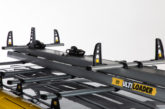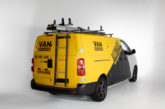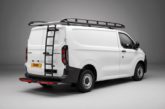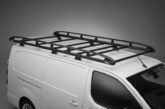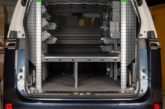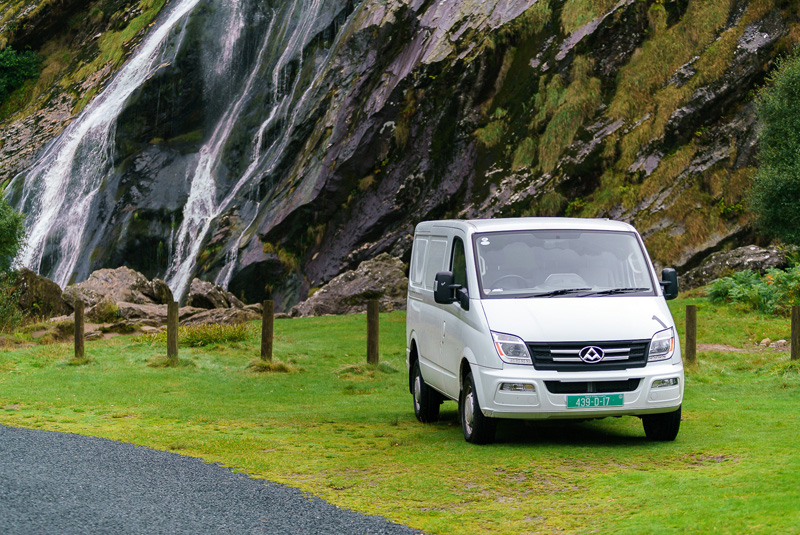
Terry Smith travels to the Emerald isle to discover why Irish eyes are smiling over the latest incarnations of the LDV commercial vehicle range.
It’s fair to say that, as a brand, LDV has certainly endured more than its fair share of ups and downs in recent years. So the peaks and troughs of Eire’s stunning county Wicklow was a particularly fitting backdrop in which to properly evaluate its ongoing reintegration into the mainstream light commercial vehicle sector.
Acquired by Chinese manufacturing giant SAIC Motor in 2010, the old Leyland DAF Vehicle was brought back to life in the UK and Ireland at the start of 2016 through the vastly experienced van import distribution specialists, the Harris Group. Today, with around 30 dealers signed up, the company is hoping to emulate the success the vehicle is currently achieving in a number of international markets, such as Australia, where the van is now ranked amongst the most popular of LCVs in its sector.
 Not that it was expecting an easy ride, in more ways than one, from the assembled British motoring trade press, who are routinely exposed to the most extensive and impressive line-up of commercial vehicles ever available from some of the biggest names in the car and van world. To its credit, however, Harris pulled out all the stops to ensure that the test route from its vast headquarters on the outskirts of Dublin would fully challenge every aspect of the V80s ability to deliver performance and comfort to a varied customer base.
Not that it was expecting an easy ride, in more ways than one, from the assembled British motoring trade press, who are routinely exposed to the most extensive and impressive line-up of commercial vehicles ever available from some of the biggest names in the car and van world. To its credit, however, Harris pulled out all the stops to ensure that the test route from its vast headquarters on the outskirts of Dublin would fully challenge every aspect of the V80s ability to deliver performance and comfort to a varied customer base.
To this end, the V80 is available in four models; short wheel base, low roof, long wheel base. medium roof, long wheel base, high roof and Chassis cab, with load areas ranging from 6.4 to 11.6m3. The elephant in this roomy back, of course, is the current engine set up, and those potential customers more inclined to embracing all that the latest mechanical technology has to offer may want to look away now.
Currently, all V80 Vans are powered by a 2.5 litre turbo diesel four cylinder, six speed manual transmission engine, built by Italian manufacturer VM Motori and, whilst clearly up to the job in terms of power, producing up to 136 bhp and 330Nm of torque, it does not conform to the latest Euro VI standards which came into effect in September 2016. At that time the company successfully applied for a derogation from the EU wide law which we understand is still in place, although clearly things will have to change some time ‘soonish’ if the vehicle is to compete on a level playing field with its already emission meeting UK and European competitors.
“Having long championed the need for a back to basics workhorse, we experienced no pangs of guilt as we clambered in and out in our mud-caked size nines.”
This not insignificant issue aside, it is a vehicle which will clearly appeal to those looking for a capable workhorse at a starting price of just under £14,000 plus VAT, a price which frankly we haven’t seen the like of since we were driving its Maxus predecessor more than a decade ago.
Reminders of that time are still present within the latest V80, including a resolutely plastic interior and a slightly clunky gear shift, but the company has somehow found a way to include a number of useful features as standard, including ABS and a Brake Assist System, electric and heated side mirrors with integrated turn signals, side impact protect system, air conditioning, cruise control, Bluetooth connection and reverse parking sensors. Payloads range from 1,204 to 1,419kg and two standard pallets can be carried in tandem in the load area of all models thanks to the 1,380mm width between the wheel arches and rear barn doors, which open to 270°. In fact, the company feels sufficiently confident in the V80 to offer a five-year or 125,000 mile warranty and roadside assistance cover as standard – something which might have previous owners of the brand turning in their graves. Five-year finance packages are also available to cover the range, which maxes out at around £22,000.
Our typically damp test drive, which also included some challenging manoeuvrability tests, was certainly sound enough and, having long championed the need for a back to basics workhorse, we experienced no pangs of guilt as we clambered in and out in our mud-caked size nines.
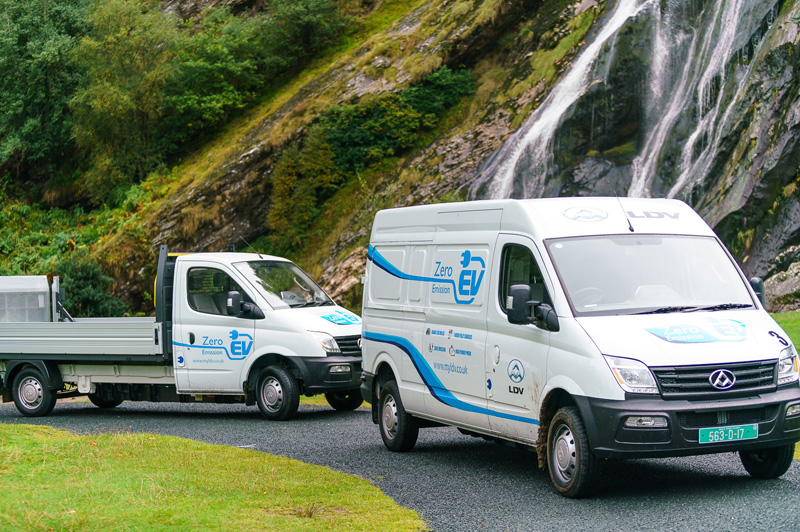
Part of the test route also included a section behind the wheel of the latest offering, the EV 80 all electric van with a projected 120 mile range available on a single one hour high capacity lithium battery charge. There was, of course, a certain irony in going from one of the worst performers in terms of emissions to one of the best in a single shift but outwardly, of course, the vehicles are difficult to distinguish.
Many tradespeople we talk to are still to be convinced of the appeal of an electric van, especially when confronted with heavy loads on a regular basis. And whilst it’s true that typical loads and colder weather will certainly reduce the range to a more likely 90 miles, it might be worth considering if you work locally, make a few trips to the merchants for supplies and are generally parked up outside a customer’s property for the best part of the day.
Two models are currently available; panel van (medium long wheel base) and chassis cab that can be fitted with a range of customer specific bodies. From the electronic park brake assist system with a helpful vehicle uphill facility to the digital intelligent CVT that switches across three power models, our EV 80 delivered a surprisingly nippy, if slightly whiney, driving experience in less than perfect conditions and, of course, all with zero emissions.
A potential stumbling block, of course, is the purchase cost. Whilst the EV is expected to undercut its big van rivals, as an electric vehicle utilising new technology it will no doubt come with a cost. Even after taking into account a likely £8,000 Government Plug In discount, the cost of protecting the environment is likely to be high. Having said that, in the long run you will benefit from cheaper short term motoring and, of course, no congestion charges and road fund licences. A lot of work obviously needs to be done in the next few years across the whole LCV sector to get smaller businesses to take more than a passing interest.
Clearly a huge investment has already been made within the giant SAIC Corporation to bring the LDV back to life and, as well as a dropside, tipper and Luton van, other models are planned for the next 12 months – including a new pick up. It would seem that, unlike the old days of the original Leyland DAF vehicle when the parent company and, to a large extent, the van itself seemed to lurch from one potential pothole to another, the road ahead under both SIAC and Harris looks a great deal smoother.
For more information on LDV, visit: www.myldv.co.uk/



